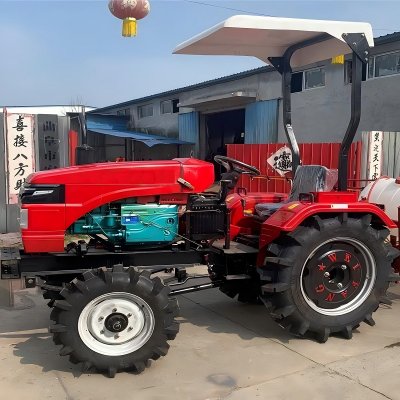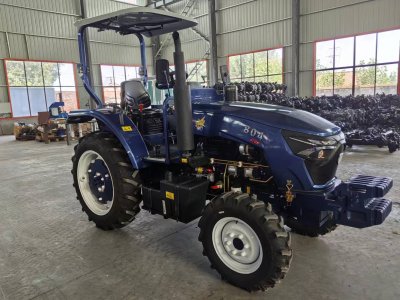AI Technology Empowers Agricultural Mechanization (Part 1)
AI Technology Triggers Industry Transformation, Opening up Vast Space for the Development of Agricultural Machinery
On one hand, the empowerment of AI will promote the improvement of agricultural machinery management and the increase of operational safety. On the other hand, it will provide new job opportunities and give rise to a number of new occupations. We are already on the way of AI - empowered agricultural mechanization. It is necessary to improve the policy support system that focuses on highlighting product applications and encouraging intelligent development, build a joint research and development system led by enterprise applications and promoted by the integration of industry, academia, research, and application, create a legal and standardized development environment based on standardization, and cultivate a team of talents who understand technology, can manage, and are good at practical operations.
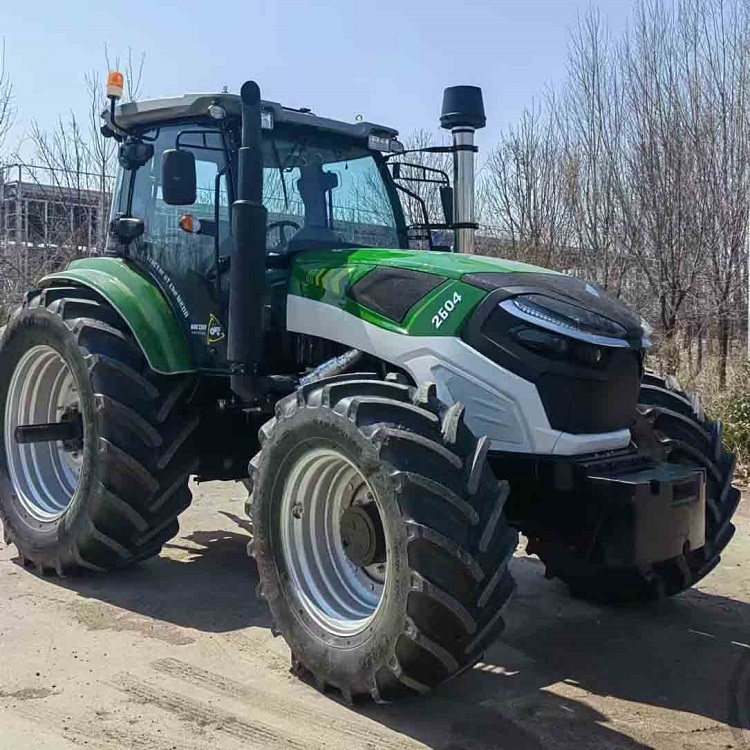
I. Application Status of AI Technology in Agricultural Mechanization
The importance of agricultural mechanization in modern society is self - evident. It can improve production efficiency, reduce labor costs, and enhance the economic benefits of agriculture. The integration of AI technology with it will multiply the application efficiency and quality of agricultural machinery, endowing agricultural machinery with learning functions and making it as intelligent as an expert.
Machine Learning Facilitates Agricultural Data Processing
Machine learning technology plays a crucial role in agricultural data analysis. It can help farmers collect and analyze data such as soil moisture and temperature, providing a decision - making basis for scientific planting. For example, through the analysis of a large amount of soil moisture data, machine learning can accurately determine when crops need irrigation. At the same time, in the analysis of agricultural product quality, it can automatically identify problems such as diseases, pests, and oil content, ensuring food safety. It can also predict the growth of crops, helping farmers formulate reasonable planting plans, reducing resource waste, and is applied in agricultural management fields such as intelligent irrigation and precision fertilization, improving the overall production efficiency. The data mining and analysis capabilities of machine learning technology in agriculture provide support for the scientific and precise management of agriculture.
Deep Learning for Crop Identification and Monitoring
Deep learning technology can accurately identify different types of crops by training models, improving the classification accuracy. Farmers can use deep - learning algorithms to analyze the growth status of crops in real - time and obtain timely planting suggestions. In the identification of pests and diseases, deep learning plays an irreplaceable role, being able to quickly and accurately judge the occurrence of pests and diseases and help farmers deal with problems in a timely manner, avoiding the spread of pests and diseases. In addition, deep - learning technology can also predict the yield of crops, providing a scientific basis for decision - making in aspects such as farmland planning, planting variety selection, and market supply, making agricultural planting more rational and profitable.
The Value of Computer Vision in Agricultural Machinery Navigation and Operation
Computer vision technology simulates the function of human eyes to achieve intelligent navigation of agricultural machinery. This technology has greatly improved the accuracy and efficiency of agricultural machinery operations, making the operations of agricultural machinery in the fields more precise. For example, it can maintain a reasonable row spacing during plowing. During the operation of agricultural machinery, computer vision technology has applications in many practical scenarios such as farmland monitoring, crop growth status identification, and pest and disease identification, providing accurate data for agricultural production, enabling problems in the agricultural production process to be discovered and solved in a timely manner. Moreover, when agricultural robots are operating, computer vision technology helps them achieve automatic harvesting and crop quality inspection, greatly promoting the automation process of agricultural production and the level of agricultural product quality control.
Natural Language Processing and Agricultural Information Services
Natural language processing technology performs well in parsing agricultural - related text data, being able to automatically extract key knowledge points, thus improving the efficiency of agricultural knowledge retrieval. The agricultural knowledge question - answering system based on NLP can understand and analyze users' query needs and quickly provide accurate and practical agricultural knowledge answers. This technology is also used to build an agricultural knowledge graph, integrating scattered agricultural information, providing decision - making support and personalized information services for farmers, and enhancing farmers' efficiency in obtaining and using various types of information in the process of agricultural production and operation.
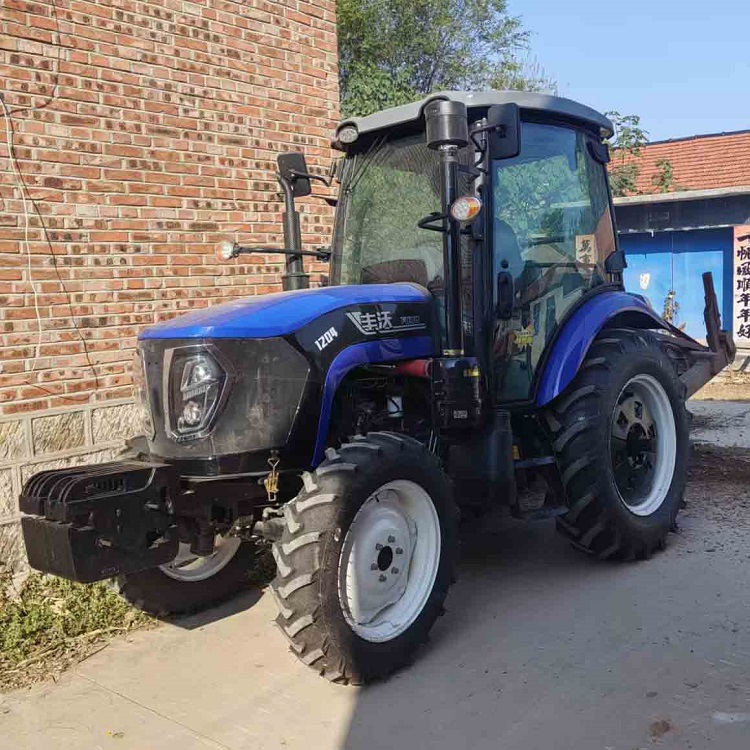
Internet of Things Technology Integrates Agricultural Machinery Intelligence
The Internet of Things technology installs sensors on agricultural machinery and equipment to achieve real - time transmission of agricultural information, improving the accuracy and scientific nature of agricultural production activities. After being combined with agricultural machinery and equipment, it can collect a large amount of information closely related to agricultural production, such as soil, temperature, and air, thus creating an optimal environment for crop growth. For example, by monitoring information such as soil temperature and humidity through the Internet of Things technology, the intelligent control of the irrigation system can be realized to ensure a good environment for crop growth. The Internet of Things can also achieve the automated management of agricultural mechanization equipment in operations such as sowing, fertilizing, irrigating, and spraying, making agricultural production operations more efficient and accurate. Moreover, it supports the traceability of agricultural products, recording information on the production, processing, and transportation of agricultural products, enhancing consumers' confidence in the quality and safety of agricultural products, increasing the market value of agricultural products, and in turn promoting the more standardized agricultural production process.
Artificial Intelligence Algorithms Optimize Agricultural Decision - making
An important role of artificial intelligence algorithms is to integrate a large amount of agricultural data and meteorological data. Through the powerful integration and in - depth analysis of massive data, it provides farmers with scientific suggestions on planting and harvesting times, avoiding the impact of adverse weather conditions and missing the best farming seasons on production. For example, according to changes in precipitation, temperature, and other meteorological data, combined with the growth cycle requirements of crops, the sowing and harvesting times are reasonably arranged. It can also provide farmers with the best crop combination suggestions, improving the output efficiency of farmland. By considering the growth characteristics of different crops, market demand, and complementary effects, the planting structure of farmland is optimized to achieve the maximum benefit of agricultural production.
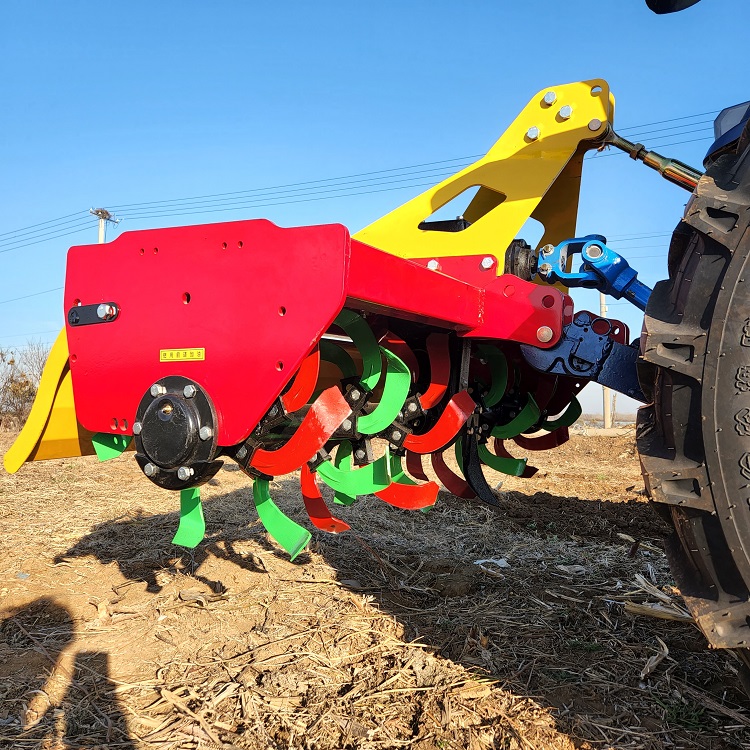
II. How AI Technology Improves the Efficiency of Agricultural Mechanization
Improving Farmland Management Efficiency
Precise Data Collection and Analysis. With various advanced devices (such as sensors, drones, satellites, etc.), AI technology can collect a large amount of farmland - related information, including soil conditions (fertility, nutrients, humidity, texture, etc.), crop growth information (plant height, leaf area, pest and disease status, etc.), and climate data (temperature, humidity, light, precipitation, etc.). For example, satellite remote - sensing technology can obtain large - area vegetation cover information of farmland, drones can conduct high - resolution image collection for specific areas, and sensors can monitor the humidity and temperature of the soil in real - time. These data are analyzed and processed by machine - learning and deep - learning algorithms of AI technology, enabling accurate mastery of the overall situation of the farmland. For example, the distribution of soil fertility can be accurately determined, so as to plan a more scientific fertilization plan. Different fertility areas can be treated differently, avoiding over - fertilization or insufficient fertilization and improving fertilization efficiency, thereby enhancing farmland management efficiency.
Achieving Automated Operation Decision - making
In farmland management, AI technology can automatically make operation decisions based on the collected data. Taking irrigation as an example, when the soil moisture sensor detects that the soil moisture is lower than the suitable humidity required for crop growth, the AI - based intelligent system can immediately start the irrigation equipment and accurately calculate the irrigation amount and duration according to factors such as crop type, growth stage, and soil type, thus achieving precise irrigation. In terms of weeding, the intelligent weeding robot can distinguish between crops and weeds using the AI intelligent recognition system, accurately remove weeds, reduce manual operation errors, and improve weeding efficiency. In addition, during the harvest period, through the analysis and judgment of crop maturity by AI, the best harvest time can be determined, and at the same time, the harvesting route of agricultural machinery can be automatically planned to avoid cross - operation and reduce harvesting losses, improving the harvesting efficiency.
Continuous Monitoring and Dynamic Adjustment
AI technology can continuously monitor the implementation effect of farmland management measures. For example, after fertilization or spraying, through image recognition and sensor monitoring technology, the growth response of crops and the prevention and control of pests and diseases can be detected. If the effect is not satisfactory, the AI system can make dynamic adjustments according to real - time data. For example, measures such as increasing the amount of fertilizer or changing the type of pesticide can be taken to ensure the effectiveness of farmland management, keeping the farmland in an ideal production state and ultimately improving the overall efficiency of farmland management.
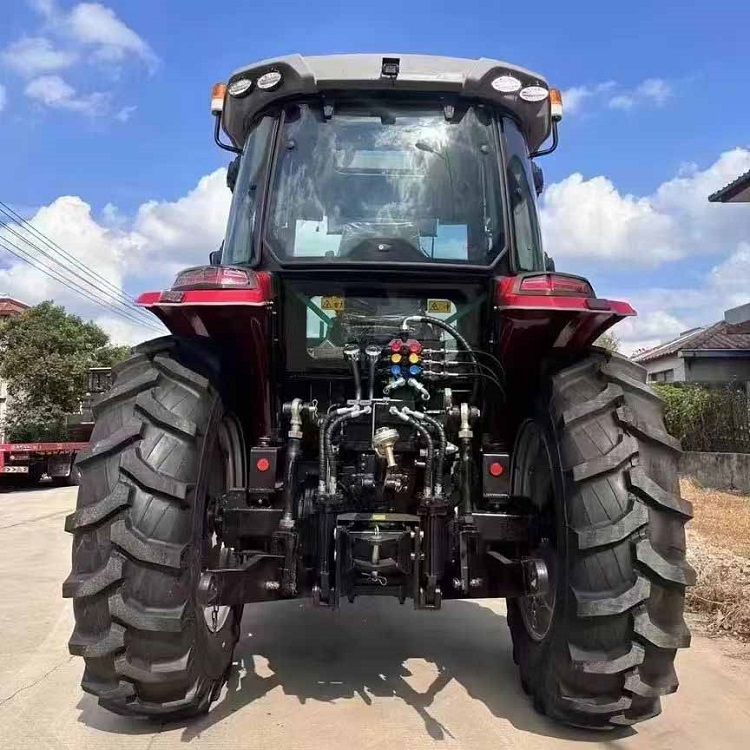
Optimizing Agricultural Machinery Operations
Intelligent Navigation and Path Planning in Agricultural Machinery Operations. In agricultural machinery operations, technologies such as computer vision and Beidou satellite navigation system in AI technology can achieve the intelligent navigation of agricultural machinery. Agricultural machinery can automatically drive according to the preset operation route and accuracy requirements, especially in large - scale farmland operations, avoiding the deviation that may occur in manual driving. For example, an unmanned tractor can accurately drive along the planned path during sowing or plowing operations, ensuring a uniform row spacing and improving land utilization. And when encountering obstacles or needing to adjust the operation area, the AI system can re - plan the path to ensure the continuity and efficiency of the operation. This intelligent navigation and path - planning system has greatly improved the accuracy and standardization of agricultural machinery operations, reduced labor input, and increased operation efficiency.
Automatic Adjustment of Operation Parameters. The combination of AI and agricultural machinery enables agricultural machinery to automatically adjust operation parameters according to the operation environment and crop conditions. For example, when a plant - protection drone is performing a spraying task, it can use AI vision - recognition technology to judge the height, density, and other conditions of the crops below in real - time, and then automatically adjust operation parameters such as flight height, spraying flow rate, and spraying width to ensure that pesticides are evenly and accurately sprayed on the crops, improving the efficiency of pesticide use and fully protecting the crops. Another example is the intelligent harvester, which can automatically adjust operation parameters such as cutting speed and threshing speed according to factors such as crop yield and humidity, ensuring the smooth progress of harvesting and reducing losses, thus improving the operation efficiency of agricultural machinery.
Fault Early Warning and Pre - maintenance. AI technology can also achieve fault early warning and pre - maintenance of agricultural machinery. By installing sensors on agricultural machinery to collect various data such as temperature, pressure, and vibration during the operation of the equipment, AI algorithms analyze and compare these data. If it is found that some data deviate from the normal range, it will give an early warning of potential fault hazards, reminding the operator to check and maintain in a timely manner. For example, when sensors in the engine detect situations such as too high oil temperature and abnormal crankshaft vibration, the AI system will issue an alarm in a timely manner. This helps to deal with problems when the fault has not occurred or is in its infancy, reducing the operation interruption time caused by equipment failures and improving the operational reliability and work efficiency of agricultural machinery.
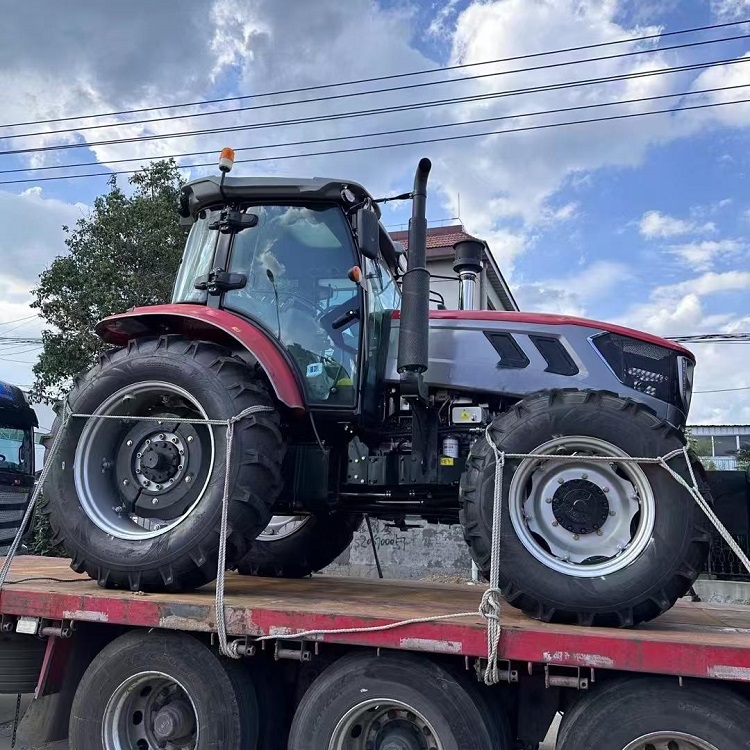
Enhancing Agricultural Industrialization Collaboration
Information Sharing and Collaborative Operations. AI technology helps to achieve information sharing in all links of the agricultural industry chain. From agricultural input supply to agricultural production, and then to agricultural product processing and sales, all participating entities can share relevant information through the platform constructed by AI technology. For example, agricultural input suppliers can adjust the supply types and quantities of fertilizers, seeds, pesticides, etc. in a timely manner according to the planting plan analyzed by AI; agricultural producers can also adjust the planting structure according to the needs of agricultural product processing enterprises. In the agricultural production link, different agricultural machinery and equipment can also achieve collaborative operations. For example, sowing machines, fertilizing machines, and irrigation machines can be connected through the AI network and can automatically carry out collaborative operations in sequence according to the crop growth stage and soil conditions, improving the overall efficiency and continuity of agricultural production.
Quality Control and Standardized Production. In terms of the quality control of agricultural products, AI technology can quickly detect the appearance, internal quality, and nutritional components of agricultural products through means such as image recognition and spectral analysis. For example, in the sorting process after fruit picking, the AI recognition system can quickly classify fruits according to factors such as size, color, and whether there are defects. This can ensure that agricultural products meet standardized quality requirements and improve the market competitiveness of products. Moreover, the production - process monitoring based on AI technology can ensure that agricultural production is carried out in strict accordance with standardized processes, from the use of pesticides and fertilizers in the planting stage to the operation specifications in the harvesting stage. This standardized production helps to expand the scale of the agricultural industry and improve the overall efficiency of agriculture.
Author: The Hanzhong woodcutter
Source: Agricultural Machinery News Networ

